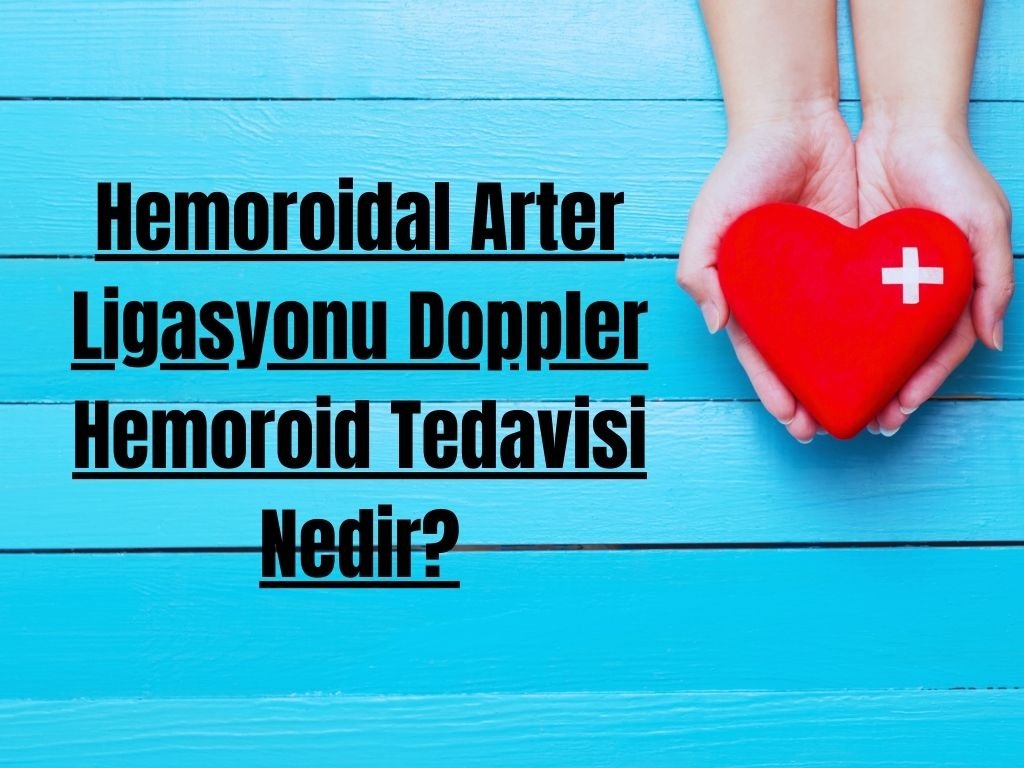What is Hemorrhoidal Artery Ligation Doppler Hemorrhoid Treatment?
Hemorrhoids are among the most common anal region diseases in the community and significantly affect quality of life. Especially for internal hemorrhoids causing complaints such as pain, bleeding, and swelling, evolving medical methods have diversified as alternatives to surgery. One such method, Hemorrhoidal Artery Ligation (HAL), especially when performed under Doppler ultrasound guidance, offers a painless and sutureless treatment option. This article discusses the HAL method in detail, explaining the procedure, advantages, risks, and who it is suitable for.
What is Hemorrhoidal Artery Ligation (HAL)?
Hemorrhoidal Artery Ligation (HAL) is a minimally invasive technique used in the treatment of internal hemorrhoids. This method is based on identifying hemorrhoidal arteries with the help of Doppler ultrasound and ligating them with a special device. No cutting, burning, or removal of tissue occurs during the procedure. This allows hemorrhoids to shrink and disappear over time without damaging the tissue.
How is Doppler Hemorrhoid Treatment Performed?
The treatment process generally consists of the following steps:
- Preparation: The procedure is usually performed under local anesthesia or mild sedation.
- Use of Doppler Device: A Doppler probe integrated into the anoscope tip detects hemorrhoidal arteries.
- Ligation: The identified arteries are tied off with special absorbable sutures. No cutting or burning is applied during this step.
- Mucopexy (If Needed): If the hemorrhoid tissue is prolapsed, it is fixed upwards by sutures (rectal mucosal fixation).
- Discharge: Patients are usually discharged the same day, typically with no work loss.
Advantages of the HAL Method
| Advantage | Explanation |
|---|---|
| Painless | Minimal pain since no surgical incision is required. |
| No sutures or incisions | No superficial wounds; does not obstruct stool passage. |
| Fast recovery | Patients usually return to daily life within 1-2 days. |
| Minimal work loss | Outpatient treatment option possible. |
| Preserves aesthetics and function | Anal canal structure remains intact. |
| Low recurrence rate | Recurrence risk is minimized, especially with proper patient selection. |
Who is the HAL Method Suitable For?
This method is ideal especially for the following patient groups:
- Those with 2nd and 3rd degree internal hemorrhoids
- Patients seeking painless and non-surgical treatment
- Those experiencing bleeding, itching, and fullness sensations
- Chronic patients unsuitable for classic surgery
- Patients with recurrence after surgery
⚠️ The effectiveness may be limited in 4th degree hemorrhoids, sometimes requiring combination with surgical methods.
Recovery Process After HAL
- Patients are observed for 1-2 hours post-procedure.
- Discharge usually occurs the same day.
- Mild discomfort and pressure sensation during bowel movements may occur within the first 24 hours.
- Normal bowel movements generally resume within 3-5 days with recommended diet.
- Painkiller needs are minimal.
- Full recovery is expected within 2-4 weeks.
Risks and Disadvantages of the HAL Method
Like all medical procedures, HAL has some risks:
| Risk | Explanation |
|---|---|
| Recurrence | Hemorrhoids may recur in unsuitable patient groups. |
| Mild pain | Usually temporary and manageable. |
| Bleeding | Rarely, small amounts may occur within the first 24 hours. |
| Temporary bowel habit changes | Possible changes in defecation sensation, especially after mucopexy. |
Comparison with Other Hemorrhoid Treatment Methods
| Method | Advantage | Disadvantage |
|---|---|---|
| HAL | Painless, sutureless, fast recovery | Limited recurrence risk |
| Hemorrhoidectomy | Most effective and permanent | Pain, work loss, higher complication risk |
| Rubber Band Ligation | Practical, done outpatient | Higher recurrence rate |
| Laser Hemorrhoidoplasty | Bloodless, modern | Expensive, limited availability |
Frequently Asked Questions (FAQ)
How long does the HAL procedure take?
Approximately 20–30 minutes.
What is the recovery time?
Most patients return to normal life within 3–5 days.
Is it painful?
No, it is much less painful compared to classic surgical methods.
Is there a risk of recurrence?
Recurrence rate is quite low with proper patient selection.
Hemorrhoidal artery ligation (Doppler-guided ligation) is a strong alternative treatment option for patients seeking a modern, effective treatment that avoids the risks of classic surgery. It shows highly successful results, especially in 2nd and 3rd degree internal hemorrhoids when applied with the correct indication.
All content on this site is for informational purposes only and is based on scientific sources valid at the time of preparation. For any health-related symptoms, diagnosis, or treatment needs, please consult your physician or authorized healthcare institution directly.




